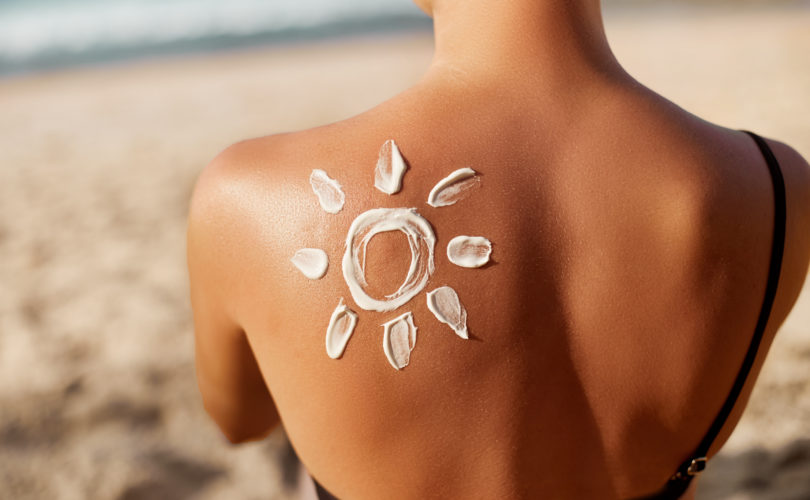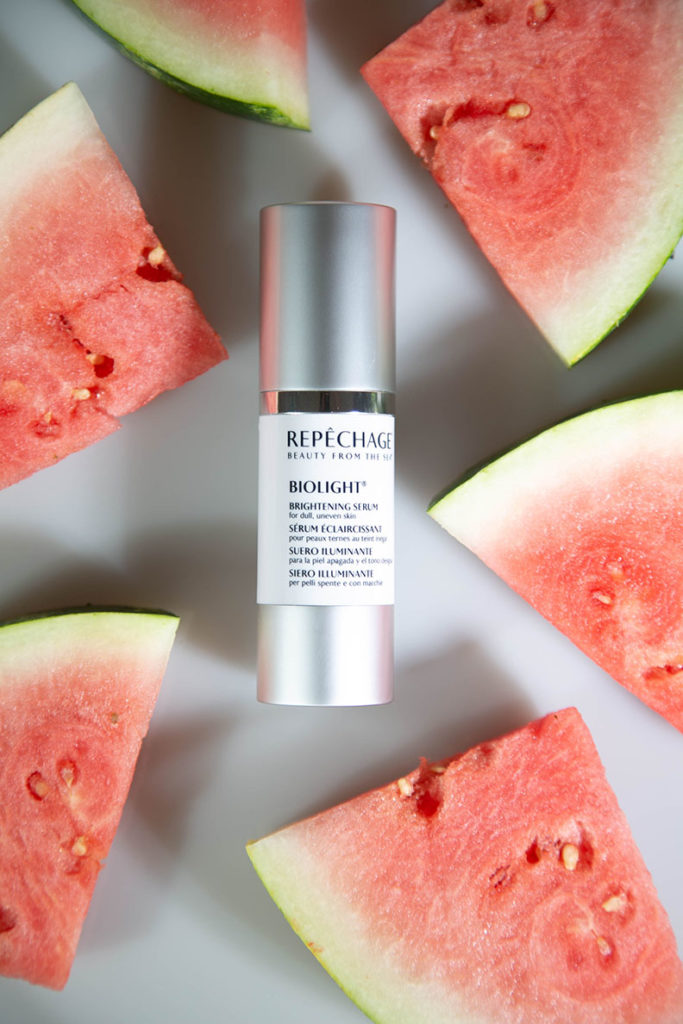The good news? It’s almost summer. The bad news? Sun exposure. It is estimated that among all these environmental factors, Ultraviolet (UV) radiation contributes up to 80% to extrinsic damage to the skin. Likewise, free radical or Reactive Oxygen Species (ROS) development is UV-induced, compounding pollutant damage and causing extreme oxidative stress on the skin.
Here, we’ll look at UV light, free radicals and skin aging, their effect on other processes such as Advanced Glycation End products (AGE), and strategies you can employ for helping repair the appearance of damage and preventing signs of aging.
The epidermal barrier is a collection of specific diverse functions, many of which occur primarily within the stratum corneum. These include maintenance of water content and balance (permeability barrier), prevention and responses to invasion by microbial organisms and antigens (antimicrobial barrier and immune response barrier), reduction of the effects of ultraviolet (UV) light exposure (photoprotection barrier), and mitigation of the effects of oxidative stresses (antioxidant barrier). All of these important barriers exist in one bodily organ: the skin.
In 2021, about 67 million tons of pollution were emitted into the atmosphere in the United States. These emissions mostly contribute to the formation of ozone and particles.
According to the EPA, scientific evidence shows that long- and short-term exposures to fine particle pollution, also known as fine particulate matter (PM), can cause premature death and harmful effects on the cardiovascular system, including increased hospital admissions and emergency department visits for heart attacks and strokes. Scientific evidence also links PM to harmful respiratory effects, including asthma attacks.
Our skin’s natural protection comes from factors within the skin, such as melanin and enzymatic antioxidants and the antioxidants we consume from the food (most notably Vitamins A, C, and E). The most important strategy to reduce the risk of sun UVR damage is to avoid sun exposure and to use a full spectrum, high SPF sunscreen when outside. The next step is the use of antioxidants orally or by topical application and interventions in preventing oxidative stress and in enhanced DNA repair.
Pollution:
In a review of reactive oxygen species (pollution) and inflammation, researchers found that the skin, now under ever greater assault from pollution and toxic elements in the environment, is not able to fully neutralize these on its own. Furthermore, inflammation and the resulting accumulation of reactive oxygen species (ROS) play an important role in the intrinsic and photoaging of human skin in vivo. Environmental insults such as UV rays from sun, cigarette smoke exposure and pollutants, and the natural process of aging contribute to the generation of free radicals and ROS that stimulate the inflammatory process in the skin.
Oxidation of DNA can produce different types of DNA damage, including strand breaks, DNA-protein crosslinks and sugar damage, among others. In a molecule’s most stable state, every one of its electrons has a pairing. Molecules lose electrons through a process called oxidation. As we know, this occurs naturally and can be due to our UV light, pollution or other environmental factors, stress, and diet, among other reasons. In order to stay in its most stable state, a molecule without a pairing begins to aggressively look for an electron somewhere else to complete it. The molecule in this state, without a stabilized pairing, has now become a free radical.
This free radical will basically do anything to stabilize itself for its own self-preservation. This could mean pulling an electron off of another molecule or bonding to another molecule, which leads to a cascade of free radical formation. When the molecule bonds with another molecule to get that missing electron, it becomes cross-linked.
Cross-linked molecules create a number of undesirable conditions. For instance, cross linking of molecules like DNA has a chance to cause cancer. With skin cancer, for example, ultraviolet rays generate free radicals that are capable of altering not only the DNA but also affect membranes surrounding the skin cells, destroying or altering enzymes and proteins required for cellular metabolism and affecting amino acids. Any and all of these responses can result in the formation of sun-induced skin cancers.
Free radicals have also been reported to participate in AGE formation and in cell damage.
One important factor about AGEs is that they not only can cause damage on their own, but can be generated by free radicals In this respect, because of the increase in environmental aggressors such as UV light and pollution, it is important to understand how AGE’s work.
Advanced Glycation End products (AGEs) are caused by too much glucose or sugar in the body and cells. Research has found that if there is too much sugar in the body, protein molecules can cross-link with sugar molecules. Once this cross-linking process has occurred, the new sugar proteins are called AGEs.
Cross-linking degrades proteins and creates AGEs, which are, in turn, responsible for leading to many age-related illnesses like cardiovascular disease, diabetes, cancer, blindness/deafness and Alzheimer’s. When it comes to the skin, glycation is believed to be the main culprit behind deep wrinkling, thinning skin and the appearance of age spots.
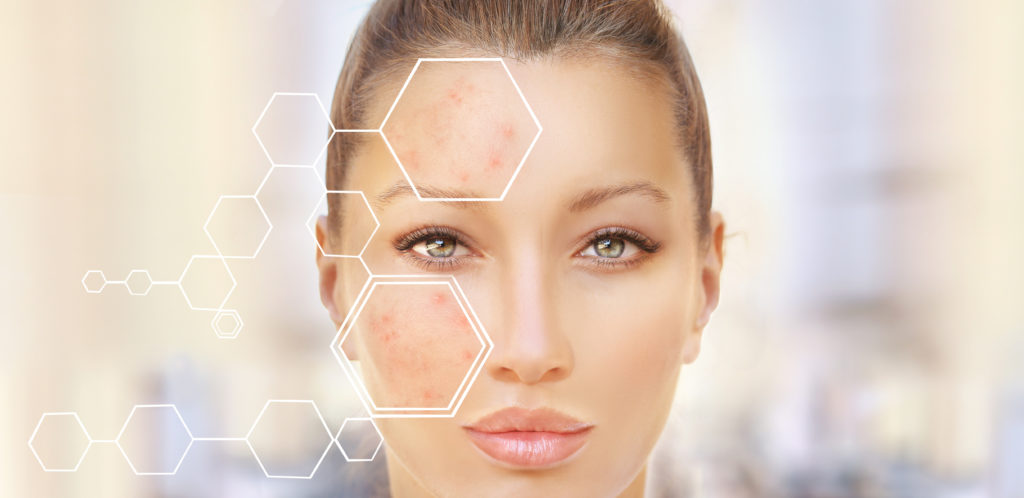
Pollution can also generate AGE and free radicals. Ambient particulate matter, or APM, is air-borne material that is detrimental, a.k.a. air pollution. A major mechanism by which APM exerts its detrimental effects is through the generation of oxidative stress. These particles can serve as carriers for organic chemicals and metals that are capable of localizing in mitochondria and generating the most common form of free radicals called Reactive Oxygen Species or ROS, which attack macromolecules such as membrane lipids, proteins, and DNA which can lead to skin health disorders.
The skin contains antioxidants, such as Vitamins E and C, glutathione (GSH), and uric acid, lycopene and β-carotene. In general, the outer part of the skin, the epidermis, contains higher concentrations of antioxidants than the dermis, Vitamin E is the most prevalent in the dermis, while Vitamin C and GSH have the highest abundance in the intercellular fluid. Surprisingly, they were not distributed evenly, with low concentrations on the outer layers and increasing concentrations toward the deeper layers of the stratum corneum.
Skin DNA molecules are constantly “bombarded” by ROS originating from environmental aggressors while damaged DNA is being constantly repaired by many cellular repair systems. If the frequency of damaging events exceeds the repair capacity, damaged DNA is not repaired in time. This can result in premature skin wrinkling, hyperpigmentation, loss of skin tone, uneven skin texture, broken capillaries and redness.
This damage can also result in dry, compromised skin. The deeper tissues of the skin are comprised of large cells loaded with moisture. There is a moisture differential of 80% at the lower layers and 15% at the upper layers. With such a great difference, there will be a natural tendency for the moisture to move from the lower layers to the upper layers through osmosis to create a movement is called trans-epidermal moisture loss (TEWL)—a movement of moisture from the deeper layers of the epidermis, where it is highly concentrated, to the more superficial regions of the epidermis, where it is less concentrated.
When the stratum corneum is intact and healthy, it serves as an effective barrier to inhibit evaporation. If the cells are packed tightly together, TEWL cannot occur, but if the cells are loosely packed and flaking, the moisture can easily evaporate.
Evaporation will occur anytime the surrounding environment drops to below 80% humidity. This is due to the fact that in optimum health, the skin is balanced with the stratum germinativum at a moisture balance of 80% and the stratum corneum at 15%. Anytime the environment humidity drops below 80%, the physical process of osmosis will occur.
The major cause of dehydration is evaporation and removal of sebum from the surface of the skin by the use of harsh, drying soaps and alkalis, as well as environmental factors such as UV light. The N.M.F. has the ability to bind moisture into the skin. When the N.M.F. removed by use of soaps and other alkalis, exfoliating chemicals such as AHA’s, manually through granular exfoliation or dermabrasion, the cells can dry and crack, producing dry skin or worse, seriously compromised skin.
This evaporation leads to a number of skin concerns, including dryness, irritation and even what some scientists call “inflammaging”— a term scientists use to describe human aging as characterized by a chronic, low-grade inflammation.
Skin Care Ingredients:
Sun protection is the important practice to reduce the risk of skin cancer and skin aging.
This includes avoiding sun exposure during the times of the sun’s strongest UV light, between 10 am and 3 pm, and wearing the appropriate SPF for the skin’s Fitzpatrick scale, as well as using a full-spectrum, non-chemical physical blocker that includes zinc and titanium dioxide.
Antioxidant ingredients can help quench free radical activity. Many antioxidants are also anti-inflammatory as well, and some report photoprotective abilities as well. These include licopene, coenzyme Q, glutathione, carnosine, selenium, zinc, bioflavonoids, green tea polyphenols, grape seed, and resveratrol, which have all been shown to reduce UV-induced skin inflammation, oxidative stress, and DNA damage.
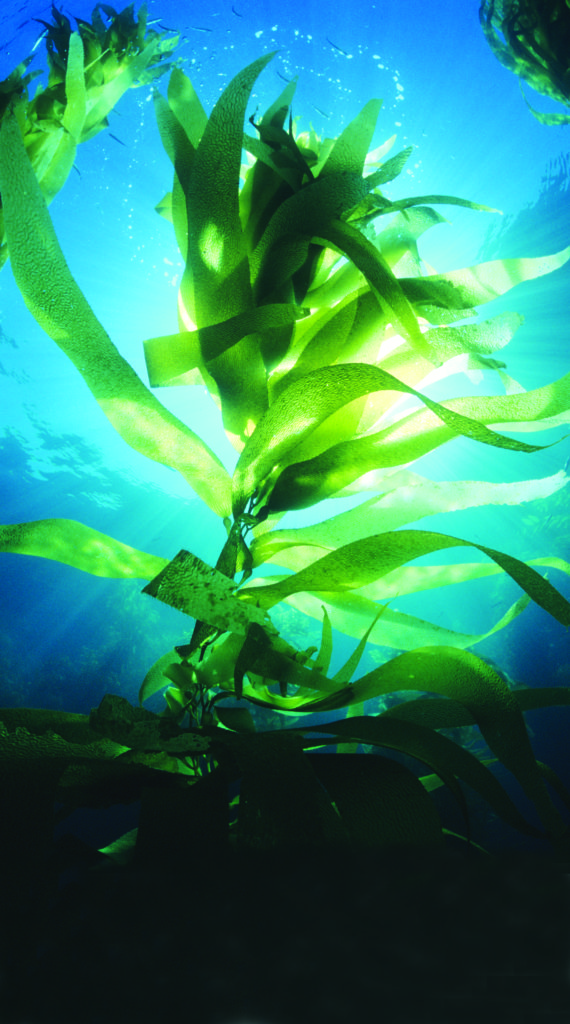
Seaweed
Seaweeds are one of the richest sources of natural anti-oxidants, such as phlorotannins, sulfated polysaccharides, fucosterol and fucoxanthins. Phlorotannins are different from tannins in terrestrial plants, but the physiologic properties are similar. They have anti-oxidant properties, scavenge free radicals, are anti-inflammatory, have chelating activity and protect against oxidative stress in cells.
Seaweed has been shown to have the greatest bio-affinity to the human body, its chemical makeup close to the elements found in human plasma, and are a source of many important nutrients, including polyunsaturated fatty acids, enzymes and bioactive peptides. Essential fatty acids help maintain our skin’s barrier, and polysaccharides such as Alginic Acid, help to lock moisture into our skin.
Some specific species of seaweed that have potent antioxidant potential are Laminaria spp. (Laminaria Digitata) and A. nodosum (Ascophyllum Nodosum), brown seaweeds found in the upper intertidal and shallow subtidal marine environments that contains Vitamins E, C, B12, B6, B3, A, and Zn, F, Cr, Co, Mn, Na, Fe, P, and Mg, as well as F. vesiculosus (Fucus Vesiculosus), a brown seaweed found in the intertidal to shallow subtidal marine environments. Rich in vitamins, fucoidans and alginic acidic, this algae is high in antioxidant activity, nd has shown efficacy in skin brightening applications.
Mastic Oil and Water: Known as the “Tears of Chios,” Mastic or Mastiha is a precious, ivory-colored resin with a balsam-like scent derived from the mastic tree known scientifically as Pistacia lentiscus. Although cultivated in other areas, it is the mastic trees in the southern tip of Chios in the Aegean that are most legendary. This ingredient is known to have multiple benefits, shown to help reduce the appearance oil and pore size, as well as helping reduce the help reduce dryness, as well as the appearance of fine lines and dark spots.
Oxidized Glutathione: A tripeptide composed of glutamic acid, cysteine, and glycine found naturally within the skin that plays an important role in preventing oxidative damage. Research shows that this antioxidant has been effective in lightening the appearance of skin, increasing hydration, and reducing the appearance of wrinkles.
Diglucosyl Gallic Acid (DGA): More potent than Vitamin C and Kojic Acid, this ingredient is known to help restore the complexion while it helps even the appearance of the skin tone.
Ascorbic Acid/ Vitamin C: Acts as an antioxidant by protecting the body against oxidative stress, a major contributor to aging.
Tocopherol/Vitamins E: A natural anti-oxidant, valued for its soothing and regenerating properties.
Matcha Green Tea: Matcha is the purest form of green tea. Unlike most green teas, matcha is shade grown and ground into a fine powder, containing the entire leaf of the Camellia sinensis, giving it the highest concentration of anti-oxidants, including EGCG (epigallocatechin gallate). Another compound, the green tea-derived polyphenol and flavonoid epigallocatechin-3-gallate showed great anti-inflammatory properties.
Quercetin: A polyphenol derived from plants responsible for their pigment color found to be a powerful antioxidant, and reported to be more potent than ascorbic acid and tocopherol. Studies have shown it has significant antioxidative efficacy and iability to inhibit ROS release.
Rutin: A natural citrus bioflavonoid, this is extracted from the dry buds of Sophora japonica, the Japanese pagoda tree. Rutin is a phenolic, anti-microbial and antioxidant.
Camellia Japonica Seed Oil: Also known as tsubaki oil, this powerful antioxidant ingredient helps prevent moisture loss to help strengthen the appearance of the skin barrier function.
Ergothioneine: An amino acid that has powerful antioxidant properties to help protect against oxidative stress and pollution.
Spa and At-Home Treatments
When considering ways to update menus for Summer, you can find antioxidant treatments that suit every skin type and concern:
For brightening and reduction of hyperpigmentation, look for seaweed-based facial treatments that combine Diglucosyl Gallic Acid, and Oxidized Glutathione such as the Biolight® Miracle Facial with Glyco-Sea® Glycolic Peel and the Biolight® Express Brightening Facial to help sallow, dull skin with accumulated dead skin cells look rejuvenated, glowing and restored while helping to control the appearance of uneven tone. For at-home, recommend the Biolight® Brightening Collection.
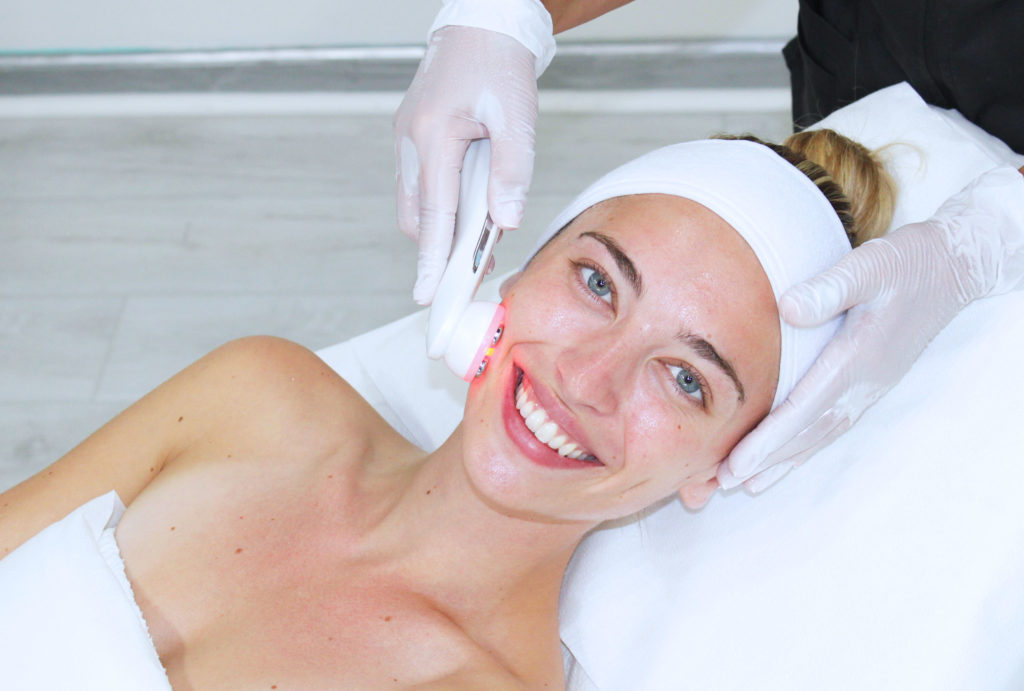
For dry skin with a compromised moisture barrier, look for facial and at-home products such as the Hydra Dew Pure™ Moisturizing Lift Facial and the Hydra Dew Pure™ Collection for Dry, Compromised Skin that are combine Seaweed with gentle antioxidant ingredients such as Mastic Water and Camellia Japonica Seed Oil.
For sensitive, hypersensitive and sensitized skin, look for facial and at-home products such as the Hydra 4® Red-Out® Facial with Micro Silver and Seaweed and the at-home Hydra 4® Red –Out Collection for Sensitive Skin that combine Seaweed and Silver with potent antioxidants such as Quercetin, Rutin and Mirabalis Jalapa extracts to calm the appearance of redness and irritation.
The most important recommendation for at-home at this time of year, however, is Mineral Face Shield® Environmental Barrier Cream to help provide support against free radicals. Knowing what factors are most affecting your clients’ skin and the proper ingredients and treatments to address their concerns will be key to growing your business, especially environmental factors going forward. Proactively informing yourself and your staff will provide you with the tools you need to make the coming years your most successful to date.
How are you updating your summer menus to help your clients have fun in the sun without damaging their skin? Let us know in the comments!
